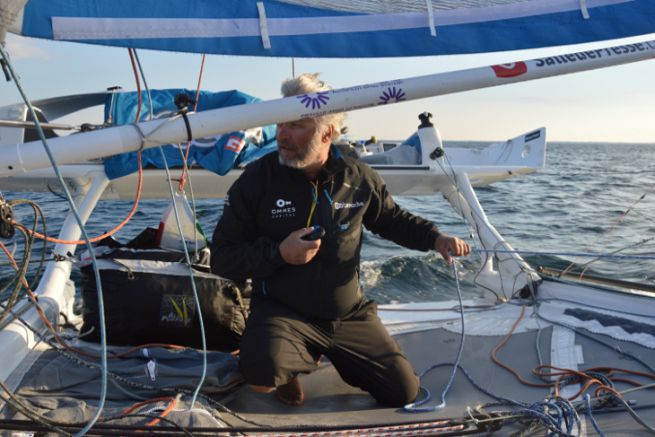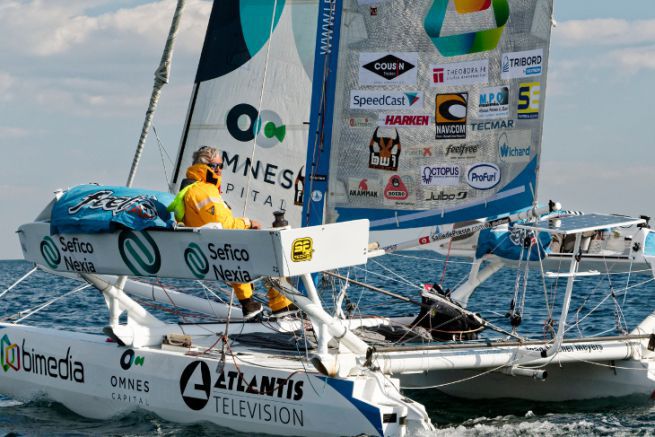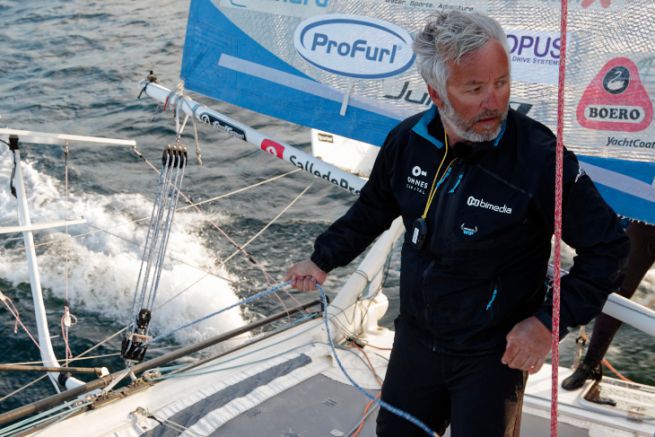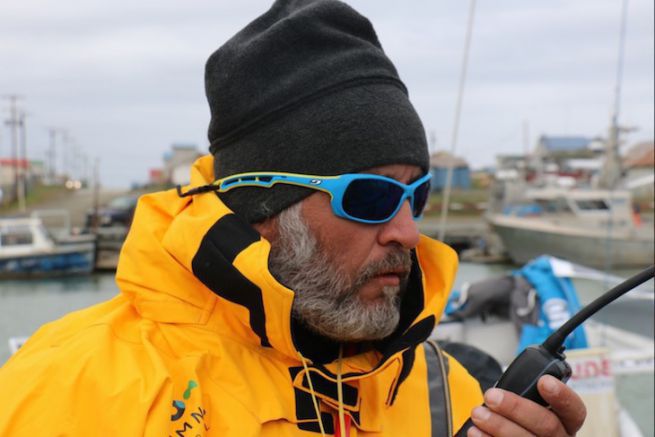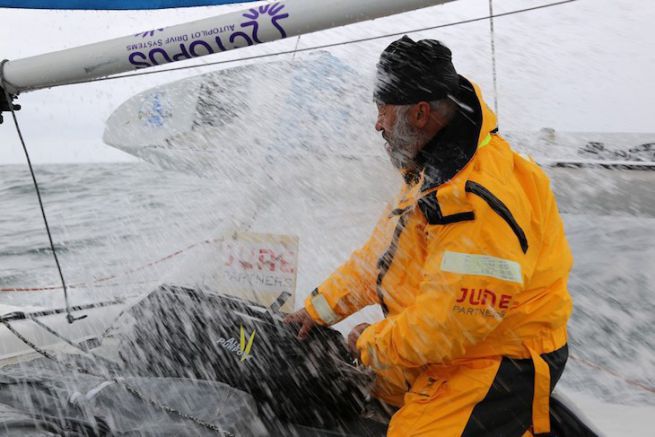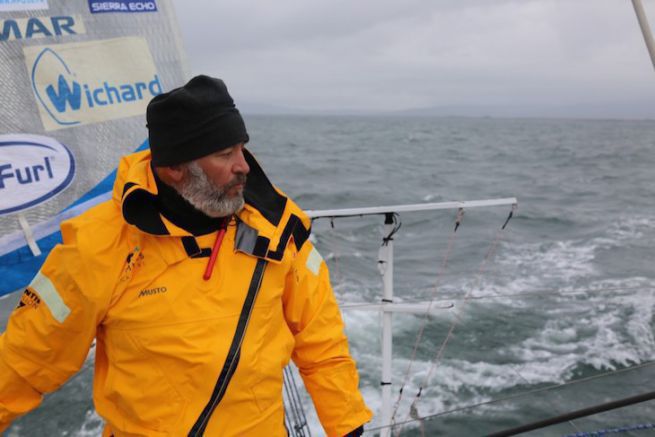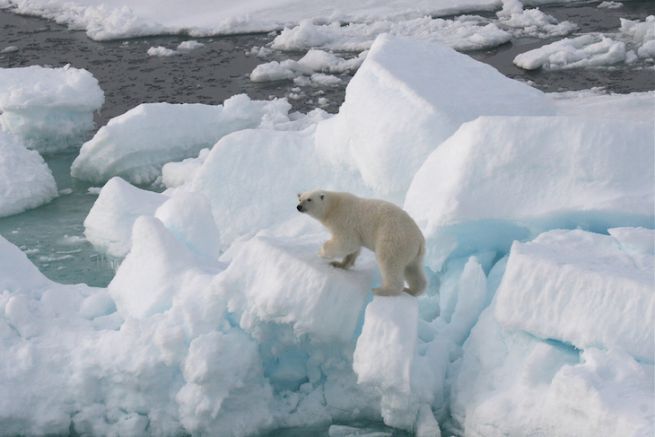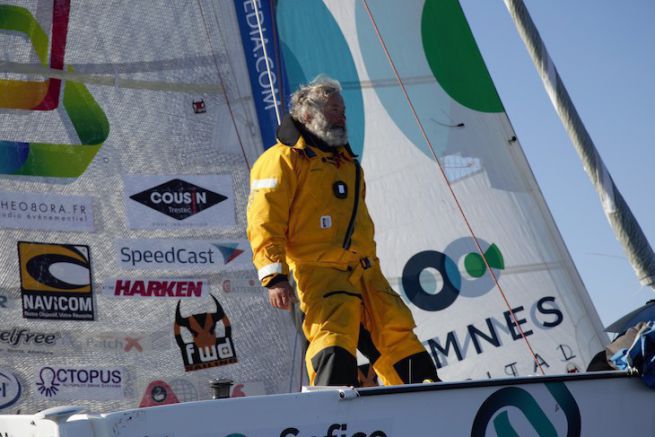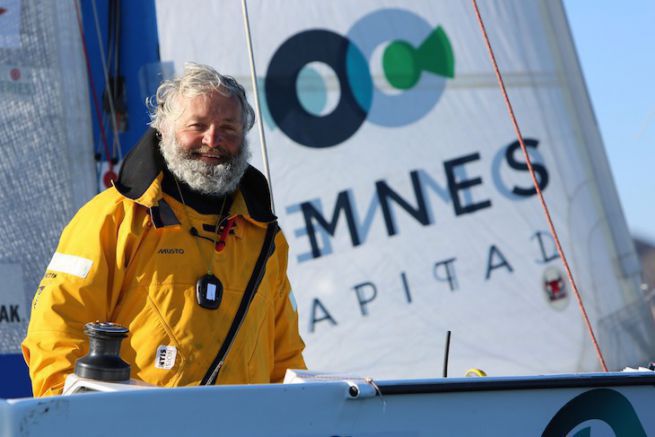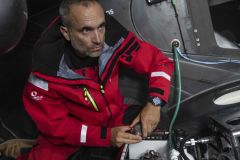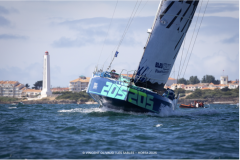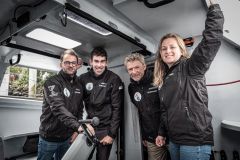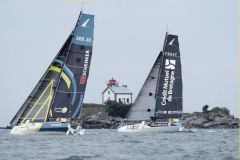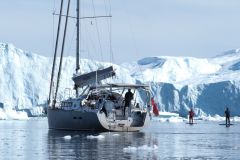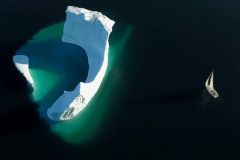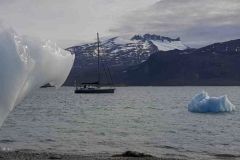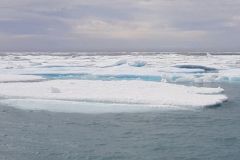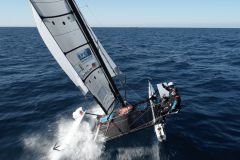How did you prepare for this great journey? Have you had any special training?
Unfortunately, I had to learn how to use a gun and how to shoot to protect myself from bears that might threaten me. It was very difficult for me to learn because I am not a hunter at all. I was lucky enough to be surrounded by the GIGN in Paris, who only use their weapon to defend themselves and I had to find a weapon here in Alaska where it is not allowed.
In the harbour, I'm next to an Austrian boat that's going to leave at the same time as me and that told me stories about polar bears. Three times they had to put the motor on to escape from the animals that were running at full speed at them. But I don't have a motor, and there will be many windless areas. I hope I won't have to use it.
On this trip, what has completely obsessed me is the preparation of the boat. We spent at least 4,000 hours on it. In the Far North, if there are technical problems, it's hell to tinker with frozen, sleep-deprived hands. I did everything I wanted to do on the boat without concessions. She's perfect and we've done everything to limit the breakage. If someone asks me what I want to add, the answer is nothing. I've never been so ready on the technical side of things.
On the physical level, I could have done more by doing preparation courses in Alaska or in the mountains. But I'll never be as well prepared. I'm counting on my abilities. I'm a bit of a force of nature. I'll never be as prepared as Mike Horn was. I'm also going there to learn, it's going to be interesting, I'm going to discover the cold and see how I can stand it. I can't master everything before, but I'll come back very enriched.
How do you plan to manage your sleep?
To be well, you have to sleep with a view of the horizon. So I plan to sleep in periods of 5 to 20 minutes. It can never be very long. You can sleep a lot, but always looking ahead. But on average, you need to sleep about 3 to 4 hours, otherwise it becomes very difficult.
I prepared for this on my previous world tour, especially on the Red Sea. It was the best experience I could have had. You'll never be able to do the same thing ashore.
I also have a great strength - which I discovered during my ocean racing career - which is being able to fall asleep in a few seconds whatever the environment. I have the ability not to lose my abilities and fatigue has never degraded me.
Here, it will be even more difficult because you will have to deal with the cold, which can keep you awake. So I'm going to try to sleep when it's as warm as possible. Sometimes I could go two whole days without sleeping, but when the sun comes up, I'll have to go to bed. So I'll be managing my sleep according to the temperature, which will be difficult without a weather forecast.
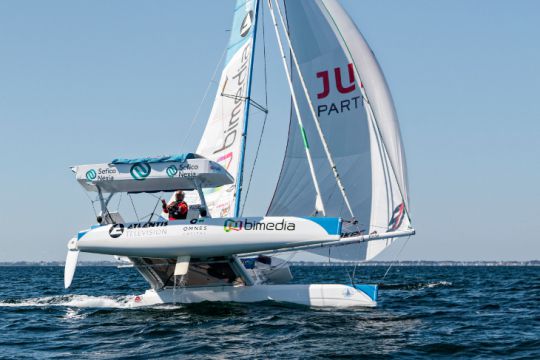
How do you plan to manage cold and humidity?
I realize that the cold is a great risk, especially if you break or fall into the water. The damp atmosphere is permanent, because the water is at zero degrees and the feeling of cold is terrible. On the pack ice, the air is cold but dry. On the water, there's no possibility of getting warm, despite my tent, which is more like a sleeping bag.
In 2012, I had the experience at Cape Horn. During 3 days of navigation, we were transiting in the cold. We had taken water in the suit, but the Gore-Tex is waterproof for about 30 hours in salt water, but only 3 hours in fresh water, which is easier to penetrate the membrane. And in the poles, the water is fresher...
Either I have the opportunity to change my clothes - which I plan to do twice a day - or I have to stay wet for several days.
What changes have you made to "Ma Louloute"?
The catamaran ( Editor's note: a 6.30 m long, 4 m wide, non-habitable sports catamaran ) has not been changed to capsize. All that is required is to reduce the canvas and anticipate the changes. We have made changes in relation to the obstacles we may encounter. The bows are now in Kevlar, but the boat remains in composite. The nose of the boat has been reinforced, the spinnaker pole changed, and mini wings installed on the benches to protect against the cold.
The boat is very powerful and it's always surprising. I have a 6 m long hull with a 12 m high mast. It's a Diam24 mast, with a very large sail area. I have a weight/power ratio very close to these small boats and yet I am not in the same environment.
We also changed the autopilot, which malfunctioned on the round-the-world trip. We tried to fully integrate the autopilot and make it watertight. It was a difficult job because the humidity is permanent. We're keeping our fingers crossed.
I have also improved my system to wet more easily. I have two anchorages instead of one.
At the origin of the project, you had planned to leave together why did you change your mind?
Sixty days is kind of the deadline where you can go away together without falling out. In a competition like the Barcelona World Race, it can be done, you don't put your life in danger. On this challenge, I know it's going to be complicated and very limited. But, as a couple, I knew that I was in danger of not going all the way on a human level. I got used to being alone.
After talking with people and learning that storms were rare and that anchoring was possible (not too deep) easily, I told myself that I could manage the crossing alone. Even if it's sure that double-handed, you can keep an eye on things more easily.
The coast is a permanent danger, but if I really need it, I can go to anchor to rest and leave.



